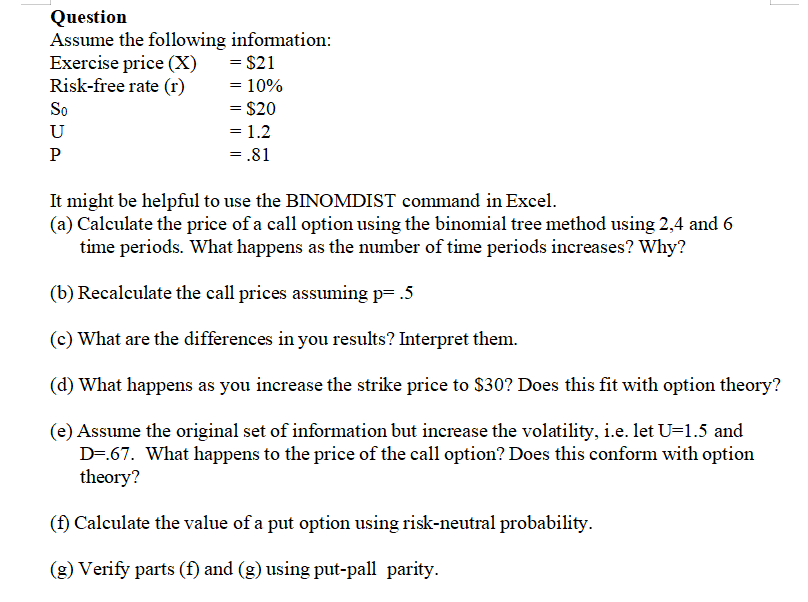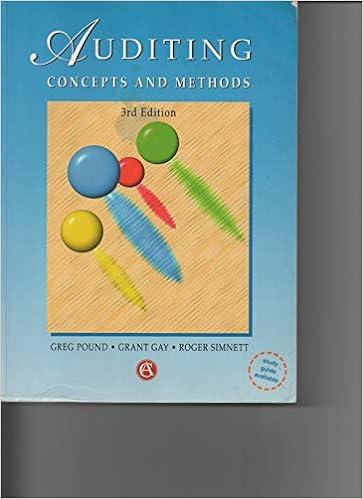Question
Assume the following information: Exercise price (X) = $21 Risk-free rate (r) = 10% S0 = $20 U = 1.2 P = .81 It might
Assume the following information: Exercise price (X) = $21 Risk-free rate (r) = 10% S0 = $20 U = 1.2 P = .81 It might be helpful to use the BINOMDIST command in Excel. (a) Calculate the price of a call option using the binomial tree method using 2,4 and 6 time periods. What happens as the number of time periods increases? Why? (b) Recalculate the call prices assuming p= .5 (c) What are the differences in you results? Interpret them. (d) What happens as you increase the strike price to $30? Does this fit with option theory? (e) Assume the original set of information but increase the volatility, i.e. let U=1.5 and D=.67. What happens to the price of the call option? Does this conform with option theory? (f) Calculate the value of a put option using risk-neutral probability. (g) Verify parts (f) and (g) using put-pall parity.
Step by Step Solution
There are 3 Steps involved in it
Step: 1

Get Instant Access to Expert-Tailored Solutions
See step-by-step solutions with expert insights and AI powered tools for academic success
Step: 2

Step: 3

Ace Your Homework with AI
Get the answers you need in no time with our AI-driven, step-by-step assistance
Get Started


